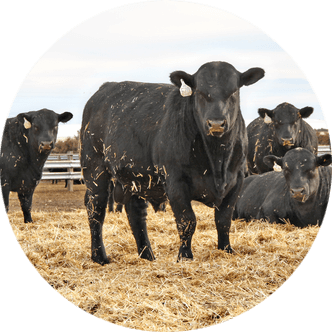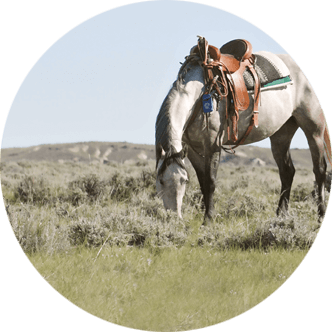Record cattle prices present both opportunity and risk
Every day, another sale barn reports another record-breaking price for feeder cattle, and consumers still haven’t turned from beef at the meat case. By all accounts, it’s a good time to be a cattle producer.
Still, Glynn Tonsor, Kansas State University (KSU) assistant professor of agricultural economics, and Lance Zimmerman, senior animal protein analyst for RaboResearch Food and Agribusiness, put the current and future market trends into perspective for attendees at the KSU Beef Stocker Field Day on Sept. 25.
Supply trends
Tonsor said the trend for less domestic beef production is expected to continue through 2027. Even with higher dressed weights, there are expected to be fewer live animals going through the system.
“Livestock Marketing Information Center (LMIC) data from Denver predicts 2025 will close with about 5.8 percent fewer commercial cattle slaughtered compared to last year, with a drop of about three percent in pounds produced,” Tonsor said.
He warned the wild card in this trend is when cattlemen start to expand their herds and continue to keep pushing dressed weights upwards.
Across the board, feeder cattle prices are reaching new highs, Tonsor said. LMIC estimates the end of 2025 will see 700- to 800-pound Southern Plains feeder steers going for $323 to $328 per hundredweight (cwt), with 500- to 600-pound feeder steers hitting the $395 to $405 per cwt mark. This is about a 22 percent rise from 2024.
Again, the trend is pushing upward, albeit at a little slower rate of increase than in 2025, Tonsor said, with LMIC predicting prices for lighter feeders reaching $427 to $442 per cwt by the end of 2027.
Tonsor said he thinks this is a conservative forecast, because if cattlemen do start to expand herds and pull calves out of the market, it drops supply.
Speaking of the beef herd, the U.S. Department of Agriculture (USDA) put the number of beef cows in the U.S. at 27.9 million head in a January report, a decrease of half a percent from 2024.
Tonsor said while cattle cycles move up and down all the time, there is a long-term trend going back to 1995 of fewer “mama cows.” This means a smaller calf crop and therefore fewer feeder cattle supplies.
This historically-low hoof count means cattlemen must pencil out their cost of gains before committing to purchasing, Tonsor advised.
“Producers need to understand what their best guess on the value added to the animal is relative to the cost of putting on those pounds. This is the key economic assessment,” he said.
One way cattlemen can run this analysis is by using online tools, such as beefbasis.com.
Margins
Looking at cow/calf returns, Tonsor showed data from the USDA and LMIC which has the cow/calf sector seeing returns over cash cost of $906 per head in 2025, $825 per head in 2026 and $747 per head in 2027.
Those are three historically-high expected margins and provide some breathing room for cattlemen who have been struggling.
Some cattlemen may be considering retaining and backgrounding their calves, either through the winter on grain or taking them through the summer on grass. Tonsor reminded the audience keeping calves and feeding them adds not only pounds and value of gain but also risk – something could happen to the calf while it’s on feed in their care.
The Beef Basis analysis tool can help beef producers walk through the cost they’d pay for the calf, the value of gain and projected returns. But it’s up to them, Tonsor said, to know their fixed costs and their risk levels to see if the feeding scenario is right for their operation.
Looking at the fed cattle markets, Tonsor warned the cost of gain is expected to rise a little, but the biggest factor in feeder cattle margins will be the price for feeders going into the lot.
The data he presented shows unhedged feedlot margins varying by about $1,000 between September and March. He cautioned this is an unprecedented magnitude of exposure, and the risk is quite high going forward.
“Supply side matters,” Tonsor said. “We talk a lot about heifer retention – the calf crop. But I would argue the majority of the industry is still slow to appreciate this has actually been more of a beef demand story.”
“Beef demand has been very good, and cattle prices would not be anywhere near as high as they are if we had a neutral beef-demand environment,” he continued. “The average American not only consumed more beef in 2025, but they have also paid more for beef on an inflation-adjusted basis.”
Beef benefits from the taste factor, he added, but he’s concerned about consumer finances. If beef prices at the store and in the food service industry continue to rise, it could be a headwind for live cattle markets.
Demand side
Zimmerman emphasized, while retail prices for beef are on track to average around $8.85 per pound in 2025, consumer demand for beef is about the highest it’s been since 1983 because the industry has focused on marbling and not only breeding cattle with potential but feeding those cattle to their fullest potential on the rail.
Still, cattlemen must understand consumers are facing inflationary headwinds, such as paying for housing, student loans, credit card debt and the rise of buy-now-pay-later loans.
“They’re cooking at home, doing more couponing, more bulk buying, more deals through shopper ads and leaning more on discount retailers,” Zimmerman said.
It’s not just moving pounds through Sam’s Clubs and Costcos, but also private-label brands at these stores as well.
Other trends Zimmerman is watching include beef-on-dairy cattle increasing the fed cattle supply by one million head, with those animals now destined for the feedlot rather than the veal supply; hot carcass weights growing about 25 pounds on average in 2024-25 and beef imports growing to about 5.4 billion pounds in 2025, up from the 20-year average of 3 billion pounds.
This is because U.S. lean trim is in short supply and must be imported to be used in popular products, such as hamburgers.
Additionally, the U.S. beef cow cull rate is below nine percent, and the heifer retention rate is slowly increasing, which means the next few years of slaughter declines will be from fed cattle numbers.
Feedlots will face unprecedented margin call risk, as higher prices paid for calves and larger weights per animal mean per animal values are more sensitive to price moves. This is putting more risk on the feeder than ever before.
Tonsor and Zimmerman emphasized these unprecedented times mean it’s worth the time to put pencil to the numbers and make sure producers’ marketing plans line up with the amount of risk they are willing to take.
Jennifer M. Latzke is the editor of the Kansas Farmer. This article was originally published in Farm Progress on Oct. 1.





